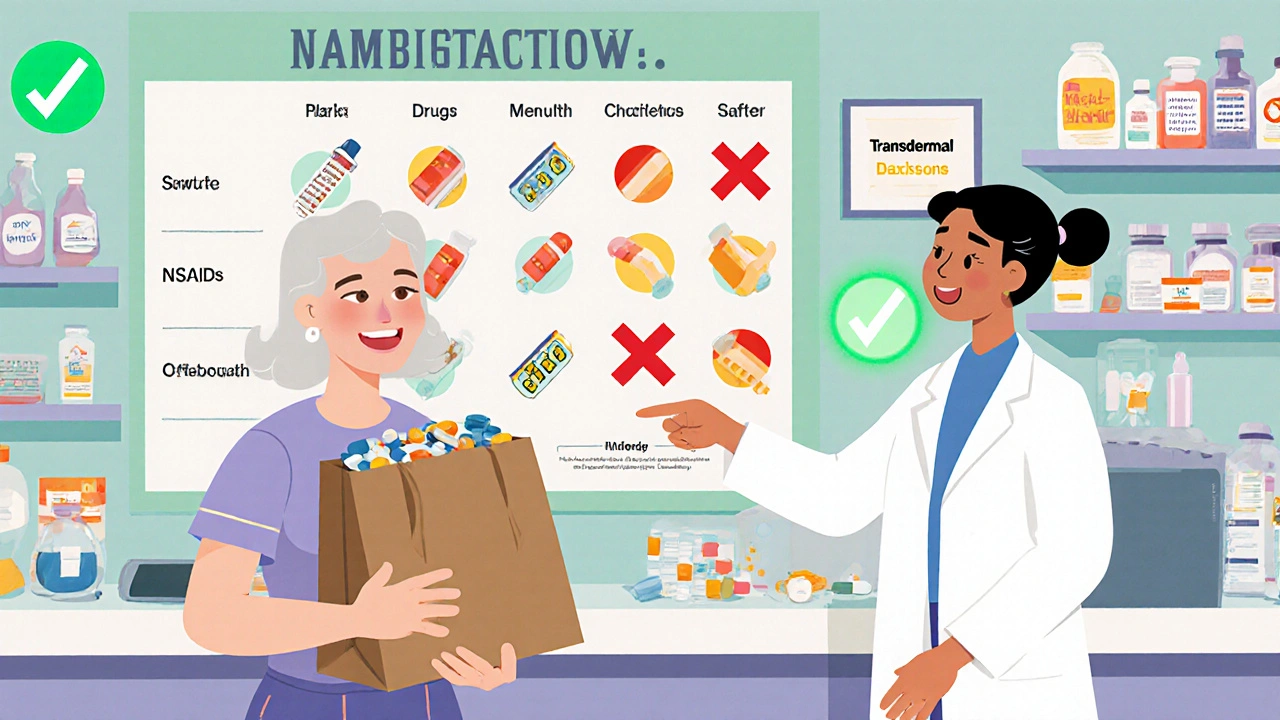Understanding Drug Interactions: What Every Patient Should Know
When you take more than one medication, the drugs can affect each other. This is called a drug interaction. Some mixes make a medicine work better, but many cause unwanted side effects or reduce effectiveness. Knowing the basics helps you avoid surprises at the pharmacy or in the bathroom.
Why Interactions Matter
Even over‑the‑counter pills can clash with prescription drugs. For example, ibuprofen taken with certain blood thinners can raise bleeding risk. Antacids may lower absorption of antibiotics, making them less effective. These problems show up as stomach upset, dizziness, or a loss of symptom control.
Bad interactions don’t just cause discomfort; they can be dangerous. A common story involves seniors who combine warfarin with herbal supplements like ginseng and end up with serious bleeding. The same goes for mixing antidepressants with certain pain relievers, which can trigger serotonin syndrome—a rapid heart rate, confusion, and shaking.
How to Spot and Avoid Bad Mixes
The first step is to keep a complete list of everything you take: prescription drugs, over‑the‑counter meds, vitamins, and herbs. Write down the dose and how often you use each one. When you get a new prescription, compare it with your list before filling.
Ask two simple questions at the pharmacy: "Can this interact with any of my current medicines?" and "Do I need to take it with food or on an empty stomach?" Pharmacists have tools that check for common clashes. If you’re unsure, a quick call can save a lot of trouble.
Online drug interaction checkers are useful, but treat them as a guide, not a final answer. They often miss rare combos or new medications. Always follow up with your doctor or pharmacist if the checker flags something.
Some interactions are predictable. Mixing antihistamines with alcohol can make you extra drowsy. Taking statins with certain antibiotics may raise muscle‑pain risk. Knowing a few high‑risk pairs lets you stay alert without memorizing every possible combo.
If you notice new symptoms after starting a medication, consider an interaction as a cause. A sudden headache, rash, or stomach pain could mean the new drug is affecting something else in your system. Contact your healthcare provider right away.
Finally, never stop a prescribed medicine without talking to your doctor, even if you suspect an interaction. Stopping abruptly can create withdrawal issues or rebound symptoms. Your doctor may adjust the dose, switch drugs, or suggest timing changes to keep everything safe.
By keeping track of what you take, asking questions, and watching for warning signs, you can manage drug interactions without stress. Simple habits protect your health and let your medications work the way they’re supposed to.
Post-Menopausal Women and Medication Changes: What You Need to Know for Safety

Post-menopausal women face unique medication risks due to hormonal changes and polypharmacy. Learn how to safely manage hormone therapy, avoid dangerous drug interactions, and reduce side effects with practical, evidence-based strategies.
- October 30 2025
- Tony Newman
- 9 Comments
Itraconazole for Fungal Infections in Immunocompromised Patients: Efficacy, Safety, and Practical Use

What itraconazole can and can’t do in people with weak immune systems: when it helps, when it doesn’t, how to use it safely, and what to monitor.
- August 24 2025
- Tony Newman
- 12 Comments
